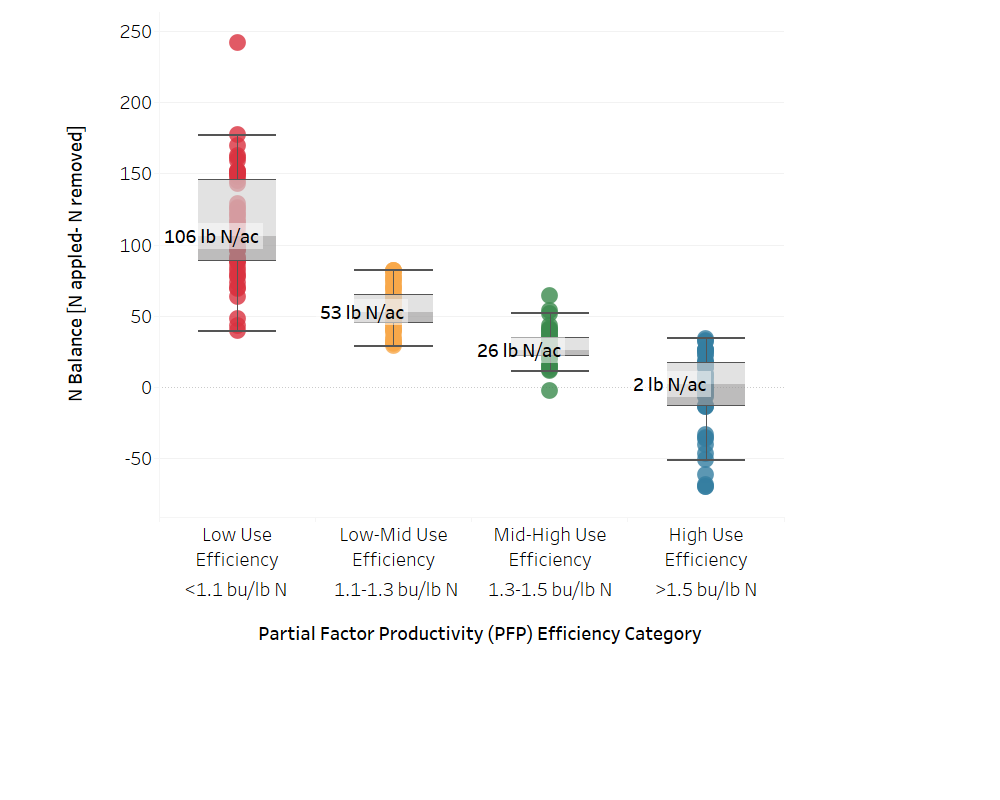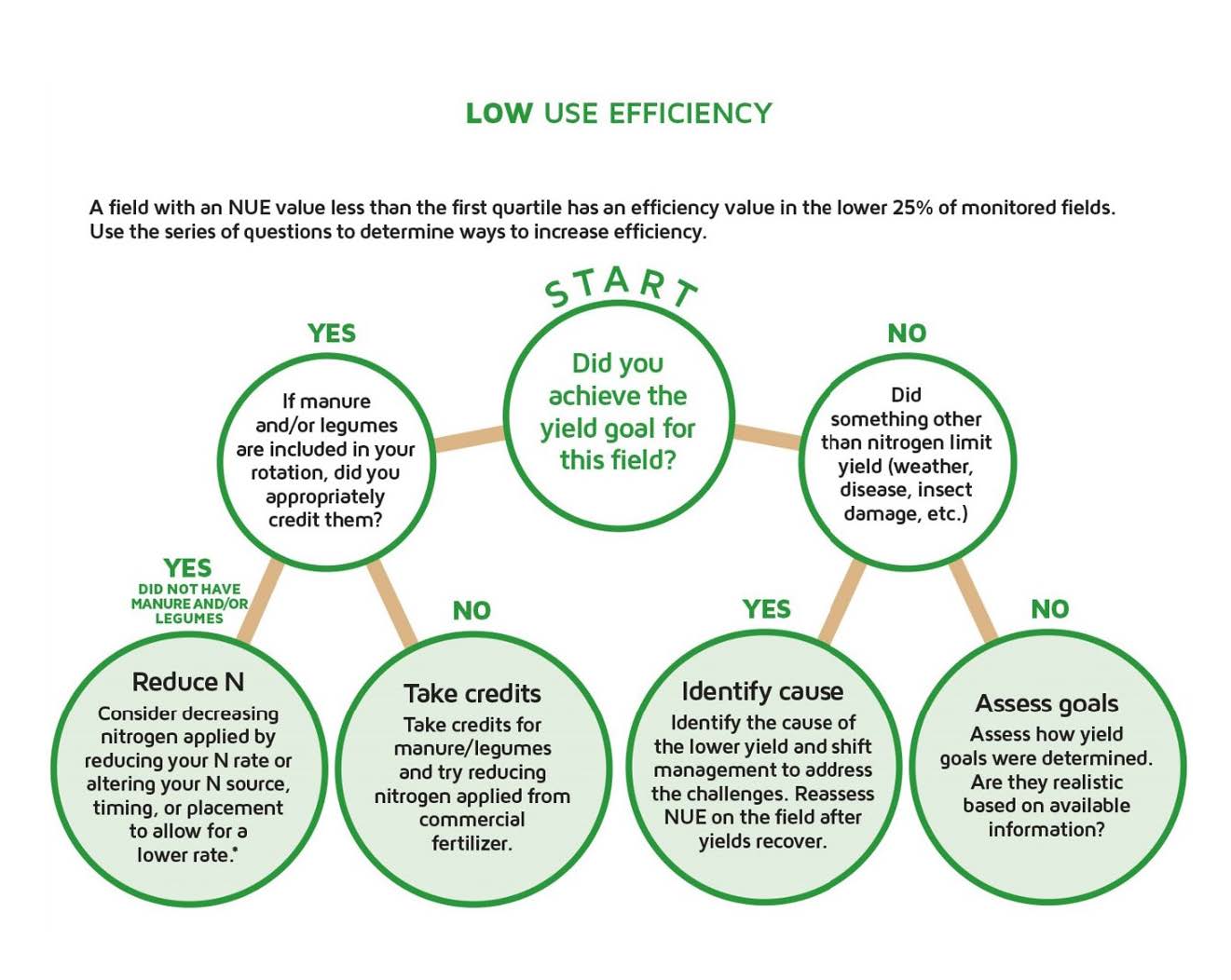This article was originally produced for Dairy’s Bottom Line, a PDPW Publicaiton
Abby Augarten abigail.augarten@wisc.edu
Developing a N management plan is a challenge for farmers given the dynamic nature of the N cycle, variable weather conditions, and contradicting messaging regarding appropriate N rates from the public and private sectors. Additionally, as farmers face increasing fertilizer costs and scrutiny in decreasing nitrate leaching, there is a lot to be gained by improving N application strategies for increased efficiency and water quality protection. Due to the complexities of N cycling, there is a benefit to farmers to evaluate N use for their given system and soils and a value for on-farm N assessment tools, such as NUE.
Discovery Farms and farmers have been collaborating since 2015 to conduct on-farm nitrogen (N) assessments to better understand Nitrogen Use Efficiency (NUE) and potentially leachable N. With five growing seasons of data collection and 300 fields in our NUE database, we have established benchmarks for different NUE categories, ranging from low to high use efficiency. See those benchmarks in: “Statewide Benchmarking for NUE in Corn Grain and Corn Silage.” Given the diversity of WI’s soils, landscapes and systems and the prevalence of manure and legumes as a nitrogen source, WI specific benchmarks of NUE provide a realistic assessment tool to support farmers to evaluate their current N management practices. An individual producer can calculate NUE for his field, compare his value to WI benchmarks, and use decision trees to determine if, and what, shifts in management would be valuable for improvements in profitability and water quality.
Simple monitoring: Partial Factor Productivity & N Balance
For a farmer interested in assessing N management, the first step is to evaluate Partial Factor Productivity (PFP) on a given field. PFP is yield divided by N applied, or ‘how much did the field produce at a given N rate?’ Fields with lower efficiencies not only have an economic incentive to improve NUE, but also have a need to decrease their risk to water quality. Fields with the lowest NUE typically have higher N balance.
N balance (N applied minus N removed) measures the amount of unused N in a system. Some of this N will be lost to volatilization, denitrification and ammonia loss, but the main pathway of N loss is through nitrate leaching. Therefore, N balance is a good indicator of potentially leachable N and is a valuable tool to assess water quality impacts of N applications.
- Graph caption: Fields with PFP metrics in the low and low-mid use efficiency categories have higher N balances and pose a greater risk to water quality.
Fields with PFP metrics below the median of 1.3 bu/lb N can benefit from adjustments to N management for both profitability and water quality. Within our dataset, we analyzed major contributors to low use efficiencies and developed suggestions to fine tune management. By utilizing the decision tree, producers with low NUE can determine what the main contributors were to their specific field’s lower efficiency and what appropriate shifts in management could be.
Through the simple measurement PFP (yield/N applied), producers can learn their efficiency category based on WI-specific benchmarks, understand potential water quality impacts, and determine if, and what, shifts in management are appropriate.
See our guide on how to calculate NUE for your farm: Nitrogen Use Efficiency: A guide to conducting your own assessment.
Looking ahead: assessing potential solutions to nitrate loading
In the next stages of the Discovery Farms NUE Project we hope to focus research efforts to assess if certain management practices can decrease potentially leachable N and how to connect potentially leachable N to real N losses through groundwater monitoring. This project will offer opportunities for farmers, UW county educators, Land and Water conservationists, producer led groups, and more to partner to develop solutions for Wisconsin’s agricultural and water quality challenges.
- Nitrogen News from Discovery Farms Wisconsin - July 20, 2020
- Nitrogen Use Efficiency and corn silage - November 4, 2019
- Nitrogen Use Efficiency Project introduces three new county partnerships - July 30, 2018

